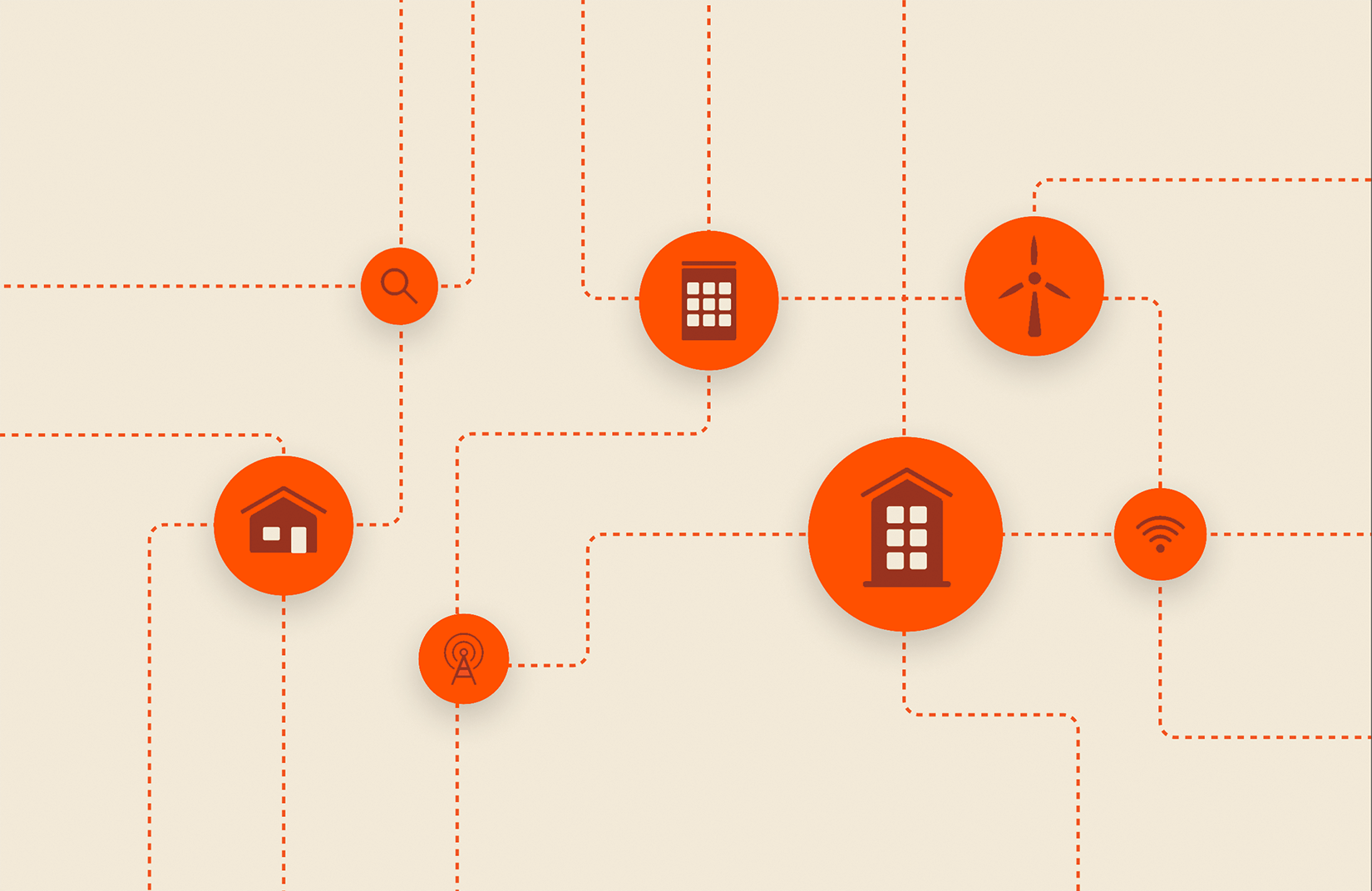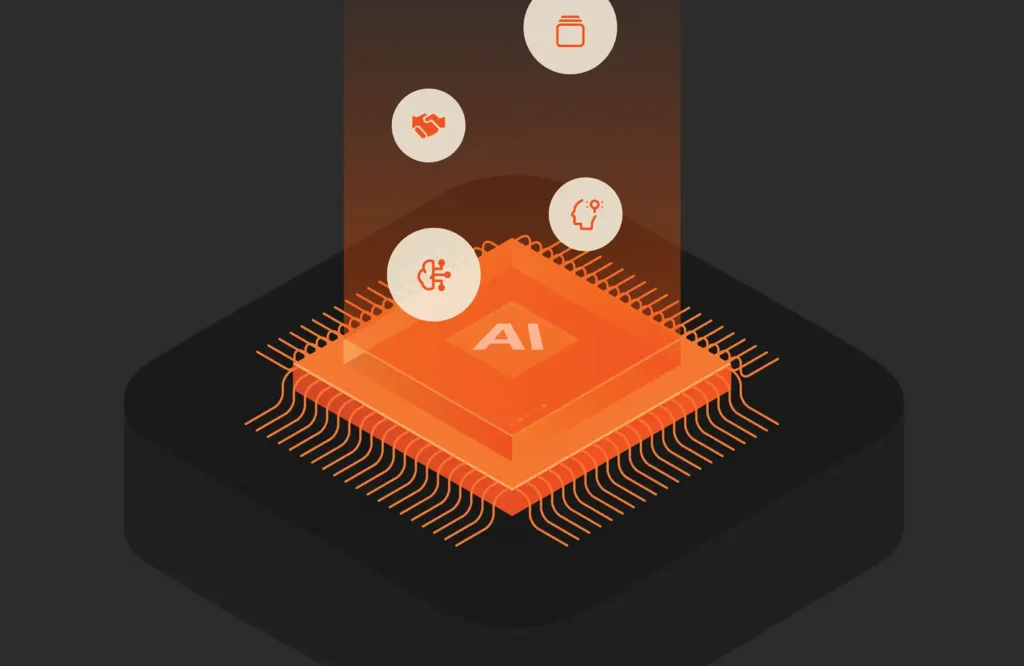Summary
AMI 2.0 data is helping utility companies operate more efficiently. Leveraging this data can help them enhance operational efficiency, improve customer service, and achieve greater flexibility in managing energy distribution.
Between net-zero goals, increasing energy costs, and decreasing grid reliability, utility companies are under more pressure than ever to go fully digital by leveraging the latest technologies to be as efficient and productive as possible. This isn’t just to improve service delivery to customers but also for the sake of business survival and “doing more with less.”
Central to this imperative is the advanced metering infrastructure (AMI)—an integrated system of smart meters, communications networks, and data management systems that allow for two-way communication between a utility company and its customers.
The first AMI meters, installed between 2000 and 2010, were a game-changer. They enabled utility companies to remotely monitor electricity, connect and disconnect service, detect tampering, and identify outages. Combined with (then) new home-based technologies like in-home displays and programmable thermostats, AMI meters allowed utilities to offer time-based rate programs and incentives that reduced peak demand and energy consumption.
But that was just the beginning.
Those first AMI meters had a shelf life of roughly 20 years. Today, they’re being replaced with newer, better decarbonization- and grid resiliency-promoting meters in a phase industry experts are calling “AMI 2.0.”
Per Deloitte: “Next-gen AMI consists of edge-computing devices with advanced capabilities that enable a better understanding of how electricity is used or generated—in real time. This intelligence holds a great deal of potential benefits for consumers and utilities alike.”
So, how can utility companies take full advantage of AMI 2.0 data to power the future without breaking the bank?
Let’s investigate, starting with a look at how AMI 2.0 is giving both utility companies and customers a new leg up on efficiency, sustainability, and cost savings.
AMI 2.0 Utility Customer Benefits
Because we all pay for energy in some way, we’re all utility customers. In that sense, everyone stands to gain from AMI 2.0, and it comes down to data—how AMI meters enable it to make things cheaper, more efficient, and more environmentally friendly.
Costs
AMI 2.0 lets you better monitor energy usage in real time or near real time, allowing you to make more informed decisions about your consumption habits. For example, the latest AMI meters provide alerts when your usage spikes. This helps you identify and mitigate energy waste, potentially lowering your bills.
Reliability and Accuracy
Nobody likes to pay for energy they didn’t use. The new AMI meters also ensure more accurate readings, reducing the likelihood of billing errors that can occur with manual meter reading. The system can quickly detect outages and report them to the utility, leading to faster restoration of services. Customers are also informed about the state of outages in real time. Utility companies can use AMI 2.0 data to predict and prevent potential issues before they result in outages, resulting in more reliable service.
Sustainability
AMI 2.0 is also a major sustainability advantage. Utility companies can better manage and optimize the integration of renewable energy sources like solar and wind, enabling customers to maximize their green energy.
Security
Finally, AMI 2.0 systems often come with enhanced security features, including encrypted communication between the meter and the utility, protecting customer data from potential cyber threats. Customers now have greater control over how their data is used and shared, ensuring that their privacy is respected.
The Benefits of AMI 2.0 for Utility Companies
The benefits of AMI 2.0 to utility companies primarily revolve around enhanced operational efficiency, improved customer service, and greater flexibility in managing energy distribution. Let’s take a closer look.
Better Load Balancing
With more granular data, utilities can optimize load management, reducing the strain on the grid during peak hours and improving overall grid stability. AMI 2.0’s support of dynamic pricing models encourages customers to shift their energy use to off-peak times, which reduces the need for expensive peak-time generation.
Faster Response Times
AMI 2.0 systems can detect outages more quickly and accurately, enabling faster response times and reducing the duration of outages. AMI 2.0 systems can also detect unusual consumption patterns that may indicate energy theft or tampering, allowing utilities to address these issues more effectively.
Better Failure Prediction
Utilities can use data from AMI 2.0 to predict potential equipment failures or issues, allowing for proactive maintenance that prevents outages and extends the life of infrastructure.
Better Customer Service
The precision of AMI 2.0 ensures accurate billing, reducing disputes with customers and improving revenue collection. Time-of-use (TOU) pricing can also help utilities manage demand more effectively.
Better Renewable Energy Integration
AMI 2.0 enhances grid flexibility by allowing better integration of distributed energy resources (DERs), such as solar panels and wind turbines, into the grid. This supports the transition to renewable energy sources. AMI 2.0 also facilitates net metering programs, where customers who generate their own renewable energy can sell excess power back to the grid, helping utilities manage supply and demand more effectively.
Better Regulatory Compliance and Reporting
The detailed data and reporting capabilities of AMI 2.0 make it easier for utilities to comply with regulatory requirements, particularly those related to energy efficiency, carbon emissions, and customer service. AMI 2.0 enables greater transparency in operations, helping utilities build trust with regulators and customers.
Reduced Operational Costs
By automating many processes and improving efficiency, AMI 2.0 helps utilities reduce operational costs, leading to better financial performance. While the initial investment in AMI 2.0 infrastructure can be significant, the long-term return on investment (ROI) is substantial thanks to the improved efficiency, revenue protection, and customer satisfaction.
How Utility Companies Can Fully Capitalize on AMI 2.0 Data
To fully capitalize on the data generated by AMI 2.0, utility companies need a suite of advanced technologies to process, analyze, and utilize the vast amounts of data effectively.
Here’s a look at the key technologies required:
Advanced Data Analytics Platforms
AMI 2.0 generates large volumes of data from millions of smart meters. Utility companies need robust big data analytics platforms capable of handling, processing, and analyzing this data in real time or near real time. These platforms allow utilities to gain actionable insights into energy consumption patterns, detect anomalies, and optimize grid operations. Predictive analytics tools help utilities anticipate future energy demands, detect potential equipment failures before they occur, and optimize maintenance schedules, reducing operational risks and costs.
Cloud Computing
Cloud computing provides the necessary scalability for storing and processing the vast amounts of data generated by AMI 2.0. It allows utilities to access and analyze data from multiple locations without the need for extensive on-premises infrastructure. Cloud platforms facilitate the integration of data from various sources (e.g., smart meters, weather data, customer information systems) and ensure that data is managed securely and efficiently.
Internet of Things (IoT) and Edge Computing
The IoT ecosystem, including smart meters, sensors, and other connected devices, forms the backbone of AMI 2.0. These devices continuously collect data on energy usage, grid health, and environmental conditions. Edge computing processes data closer to where it’s generated, at the edge of the network. This reduces latency, enables real-time decision-making, and reduces the burden on central data processing systems.
Artificial Intelligence (AI) and Machine Learning (ML)
AI algorithms can analyze AMI 2.0 data to optimize grid operations, predict energy demand, and enhance load balancing. AI-driven systems can also identify inefficiencies in the grid and recommend corrective actions.
Machine learning models can predict equipment failures or grid disturbances based on historical data, allowing utilities to perform maintenance proactively rather than reactively, thus improving grid reliability and reducing downtime.
Geographic Information Systems (GIS)
GIS, combined with real-time data from AMI 2.0, enables utilities to monitor the grid’s status, track energy flows, and visualize potential issues on a geographic map. This helps in optimizing the placement of new infrastructure, managing grid assets, and responding to outages more efficiently.
Cybersecurity Technologies
Given the sensitive nature of energy usage data, utilities need to implement strong encryption methods and security protocols to protect data both at rest and in transit. This ensures customer data privacy and protects the grid from cyber threats. Utilities need to deploy advanced cybersecurity tools that can detect and respond to threats in real time. AI and ML can be used to identify unusual patterns that may indicate a security breach.
Customer Engagement Platforms
Customer engagement platforms like CRMs enable utilities to share AMI 2.0 data with customers in an accessible and user-friendly way. Customers can view their energy usage, receive alerts, and participate in demand response programs through these portals.
Integration with Renewable Energy Management Systems
To manage the integration of distributed energy resources (DERs) like solar panels and wind turbines, utilities need distributed energy resource management systems (DERMS). These systems use data from AMI 2.0 to optimize the flow of energy from renewable sources and ensure grid stability.
Regulatory Compliance and Reporting Tools
Ensuring data integrity and compliance with data protection regulations is critical. Data governance tools help utilities manage data quality, ensure compliance with regulations, and maintain audit trails.
How a Unified Storage Platform Enables AMI 2.0 Innovation
Now that you know all about AMI 2.0 data, it’s important to note that, like other types of data, AMI 2.0 data is only increasing. As a result, this brings the usual set of challenges around efficiently storing, securing, and managing it so you can make the most of it. A platform like Pure Storage can enable utility companies to do just that.
Pure Storage’s all-flash data storage solutions help utility companies fully leverage AMI 2.0 data via unparalleled performance, simplicity, scalability, and security. Low latency in data access and processing enables faster response times for critical operations like outage management and load balancing. Advanced data reduction techniques like deduplication and compression also help to minimize the storage footprint of AMI 2.0 data. This reduces the overall storage costs for utility companies while maximizing the efficiency of data storage infrastructure.
The Pure Storage data platform addresses these challenges seamlessly. The platform scales easily, allowing utilities to expand their data storage capacity as needed, without compromising performance. Non-disruptive upgrades allow utilities to increase capacity or improve performance without downtime or interruption to critical services. In addition, Pure Storage arrays are designed to be energy efficient, which allows utility companies to reduce their own operational energy consumption and support broader sustainability initiatives.
Discover how the Pure Storage platform can help you thrive in the AMI 2.0 era.
1. Scalability
AMI 2.0 generates massive and continuously growing volumes of data. Pure Storage solutions are designed to scale easily, allowing utilities to expand their data storage capacity as needed and cost-effectively, without compromising performance. Also, Pure’s non-disruptive upgrades allow utilities to increase their storage capacity or improve performance without downtime or interruption to critical services.
3. Data Reduction and Efficiency
Pure uses advanced data reduction techniques like deduplication and compression to minimize the storage footprint of AMI 2.0 data. This reduces the overall storage costs for utility companies while maximizing the efficiency of data storage infrastructure. Pure’s arrays are designed to be energy-efficient, which aligns with the goals of utility companies to reduce their own operational energy consumption and support broader sustainability initiatives.
4. Reliability
Pure provides robust disaster recovery solutions that protect AMI 2.0 data against loss due to hardware failures, natural disasters, or cyberattacks. This ensures that utilities can be cyber resilient and quickly recover and resume operations in the event of an outage.
5. Data Analytics and AI/ML Integration
Pure’s FlashBlade platform is designed for modern data analytics and supports the integration of AI and machine learning tools. This enables utility companies to derive actionable insights from AMI 2.0 data, such as predictive maintenance alerts and energy consumption trends Pure’s solutions are also optimized for modern data architectures, including data lakes, which allow utilities to aggregate and analyze AMI 2.0 data alongside other operational data to gain a comprehensive view of grid performance and customer behavior.
6. Simplified Management
Pure provides a unified management platform that simplifies the administration of large-scale storage environments. Utilities can manage their storage resources more effectively, reducing the operational complexity associated with AMI 2.0 data management.
7. Security and Compliance
Pure offers built-in encryption to protect AMI 2.0 data both at rest and in transit. This is crucial for ensuring the privacy and security of sensitive customer information and maintaining compliance with regulatory standards. Pure’s solutions include features like immutable snapshots, which help protect AMI 2.0 data against ransomware and other cyber threats by ensuring that critical data cannot be altered or deleted by unauthorized users.
8. Support for Hybrid Cloud Architectures
With solutions like Pure Cloud Block Store, utilities can seamlessly move data between on-premises storage and cloud environments, enabling better disaster recovery, workload migration, and data sharing capabilities.Learn more about how the Pure Storage platform helps utility companies thrive in the AMI 2.0 era.
Power the Future
Ensure you can capitalize on AMI 2.0 data with the Pure Storage platform.
![]()







